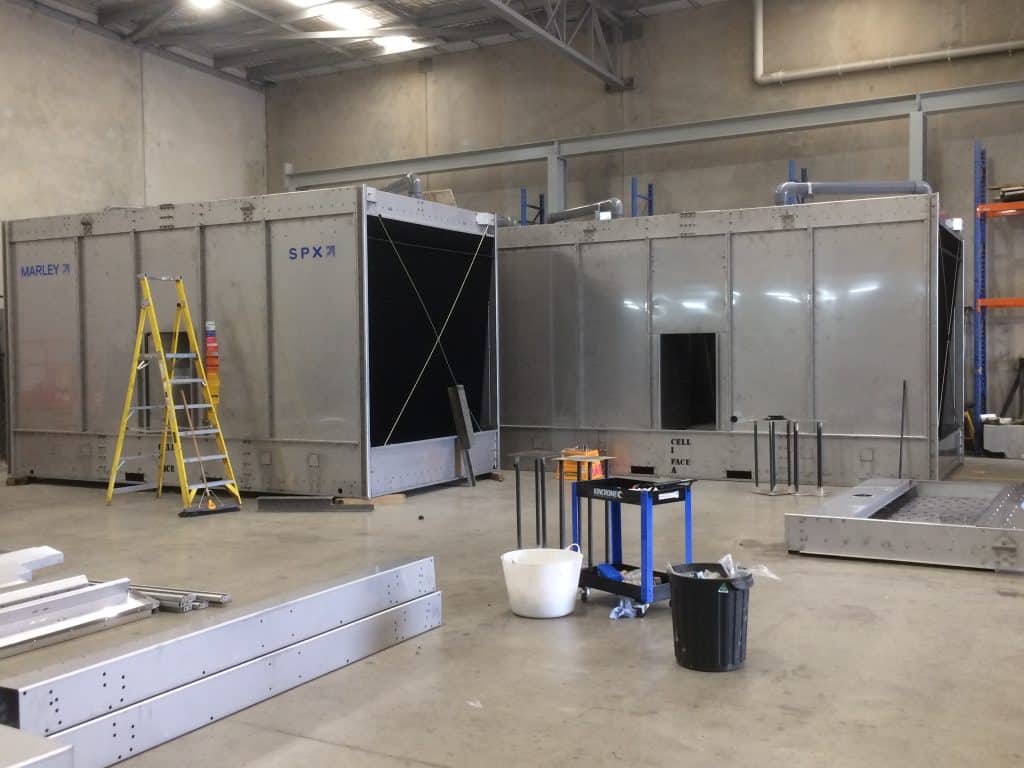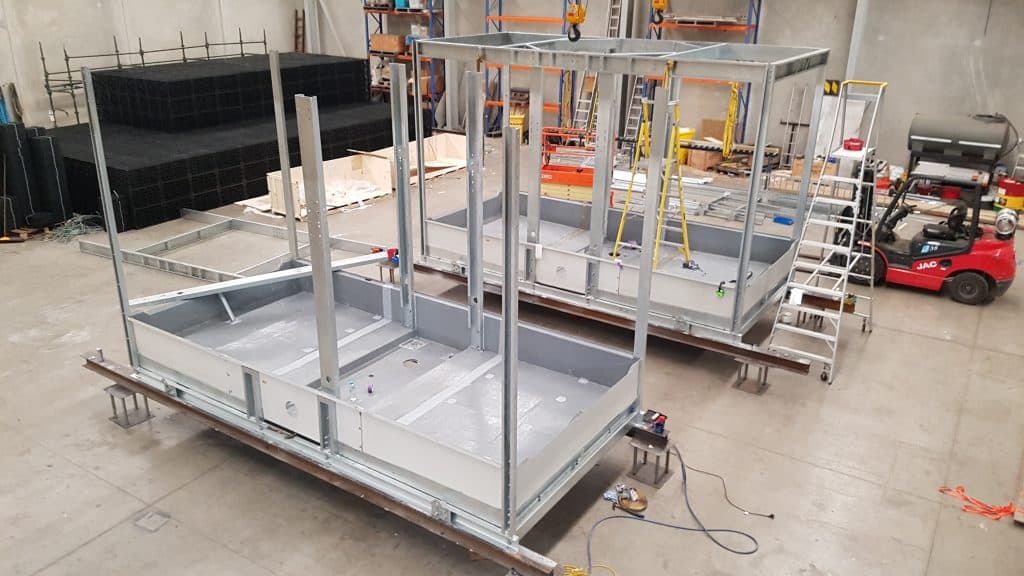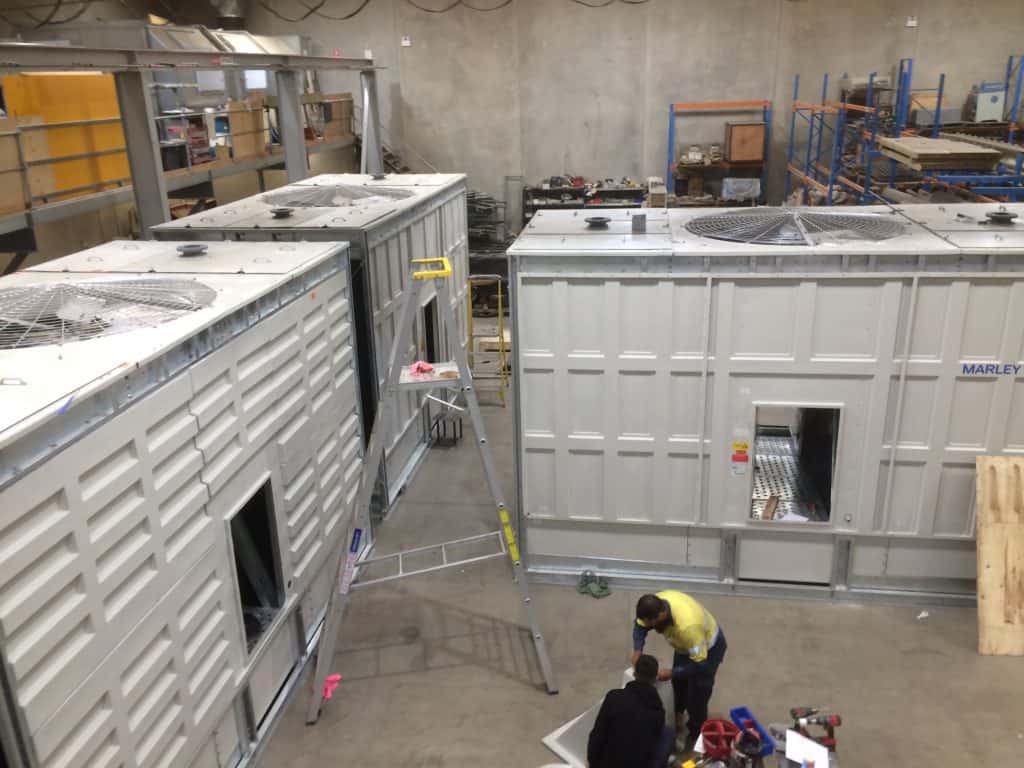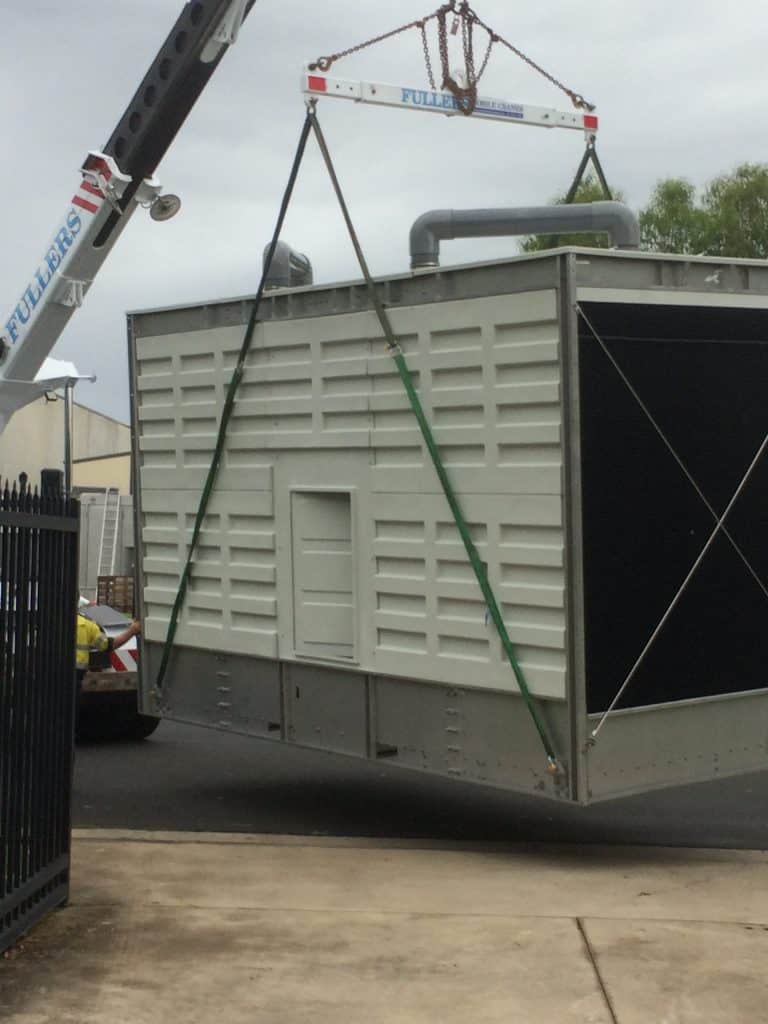In the air conditioning market, stainless steel and fibreglass are the most popular materials used to build cooling towers. Each has its own pros and cons, but which is right for you?
Since 2002, Marley Flow Control has been the industry leader in the manufacturing of cooling towers. We are an Australian-owned and operated brand that offers a high level of expertise and a large range of products that are ready to order. Our wealth of knowledge has allowed us to work with some of the country’s largest businesses and corporations who we are pleased to call our clients.
So which material should you choose for your cooling tower? What are the benefits and disadvantages of each one? Read on to learn more about stainless steel VS fibreglass cooling towers.
What is a cooling tower?
A cooling tower is a specialised device that discharges heat waste into the atmosphere. This process is done by drawing cool air over the surface of the water. Small amounts of water then evaporate, which lowers the temperature of the water running through the tower.
Cooling towers are used to lower the temperature of the circulating hot water from the condenser or any other heat exchanger. The cooled down water is then ready to be pumped around again back to the heat exchangers.
Read: Cooling tower services – types of cooling towers
Stainless steel
Everyone understands that stainless steel is strong, durable and long-lasting. Its robust nature means that it is a low-maintenance material that retains lustre for years to come. But is this suitable for your cooling tower?
Advantages
Stainless steel is incredibly strong. This is an advantage for those who wish to put loads on the tower, such as piping, attenuators and platforms. Ladders can also be attached to the structure without fear of damage or risk to the workers using it.

Unlike fibreglass (FRP), stainless steel won’t creep, sag or deteriorate. It also won’t lose its properties over time and deform. This is because stainless steel is more resistant to high and low pH levels compared to FRP. With proper maintenance and care, your stainless steel tower will remain as sturdy as the day it was installed.
Your stainless steel tower will almost never crack. Being such a durable material, stainless steel isn’t susceptible to damage from handling or impact. In the instance that something was to hit your tower, it will dent rather than break. This means that even when partially damaged, your cooling tower will still be in working condition.
Disadvantages
In rare cases, the additional weight of a stainless steel tower can be a disadvantage. For example, when a tower needs to be mounted onto a roof, which has a very low weight limit.
Many owners don’t want the expense of hiring an engineer for an engineering enquiry, or the downtime of redesigning the facility in order to crane the new tower in. In this case, an FRP tower may be a more suitable option thanks to its lightweight nature.

FRP towers are normally more cost-effective than stainless steel. However, the total project cost can be reversed once access platforms and piping are considered. An FRP tower cannot support these mechanisms, so other means will need to be invested in.
Fibreglass reinforced plastic (FRP)
Fibreglass reinforced plastic, or FRP, is a cost-effective material that is popular among many manufacturers. Is it suitable for your cooling tower though? This depends on your circumstance and budget.
Advantages
An FRP cooling tower is lighter than stainless steel towers. In a replacement situation where an old tower is in a precarious location – on a rooftop, for example – the dry weight of an FRP tower is light enough that it can be craned to the location needed.
Disadvantages
However, unlike stainless steel, FRP does not resist impact very well. The same crane that is used to lift your new FRP tower into place may accidentally hit a wall or truck, causing your new tower to crack. If this happens, expensive fibreglass repairs will be needed.

Cooling towers are constantly warm, and the water is always chlorinated and exposed to damaging UV rays. This causes the FRP to ‘creep’ – meaning that the material itself loses its properties and deforms over time. When this happens, the tower can start to sag with the weight of the warm water. Unfortunately, this cannot be repaired. The only solution is to replace the whole tower.
Cold water basin: Stainless steel or FRP?
While the choice of stainless steel or an FRP cooling tower depends on your budget and situation, the cold water basin is another story.
What is a cold water basin?
A cold water basin is a device or tray-like structure underlying the cooling tower. Its purpose is to receive the cold water from the tower and direct its flow to the suction line or sump.

The cold water basin is constantly filled with water. This means that the materials used for the basin will be exposed to more chemicals and varying pH water levels than any other part of the tower. So it’s crucial that the material chosen is strong, durable and robust.
Stainless steel or FRP?
While it’s possible to replace the top or side of your tower, it’s often economically impractical to repair or replace a damaged cold water basin. So choose stainless steel for your basin. Stainless steel is a more reliable material, so it’s less prone to leaks, cracks and deterioration.
While a full stainless steel tower is the best option, sometimes it isn’t always viable. In that instance, having at least the cold basin in stainless steel and the rest in FRP will provide the benefits of stainless steel in the most critical area.
Find out how we can use our engineering experience to help find the right solution for your business needs. Contact us here for a free quote.
